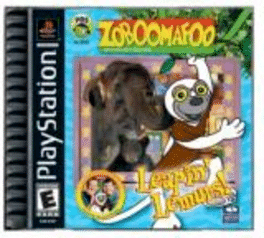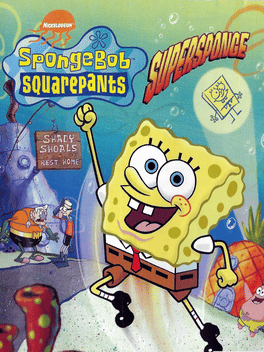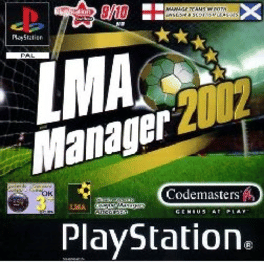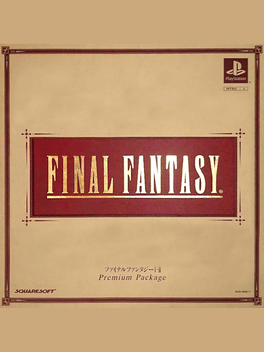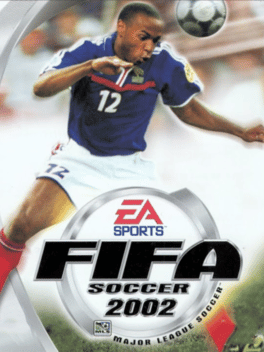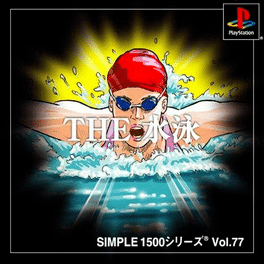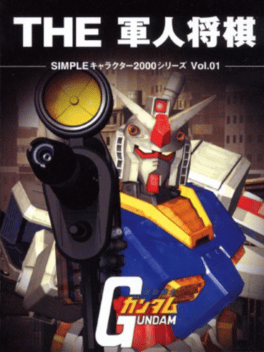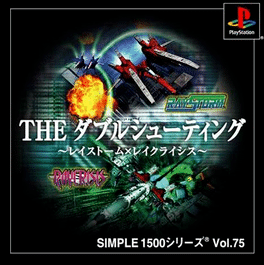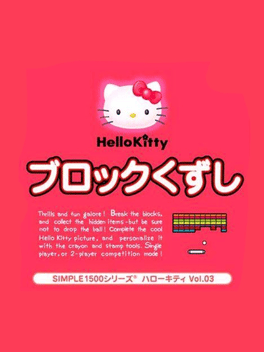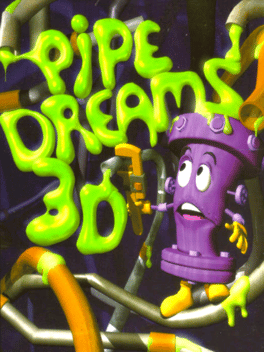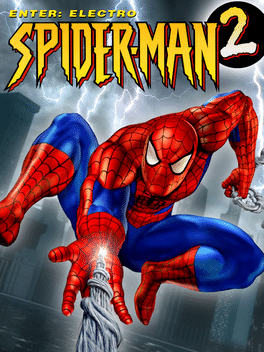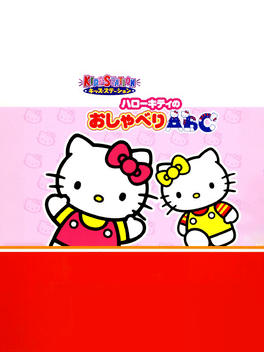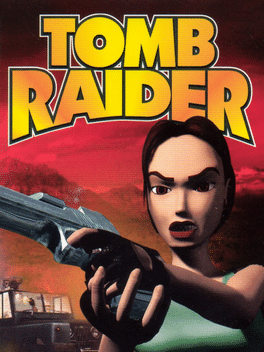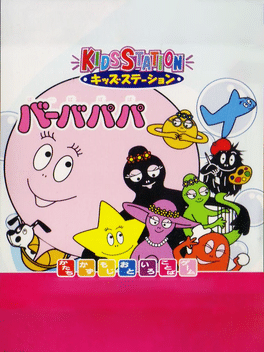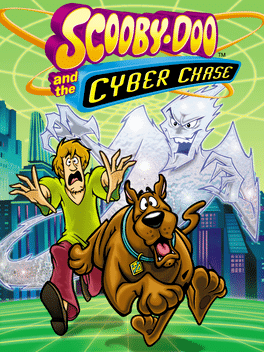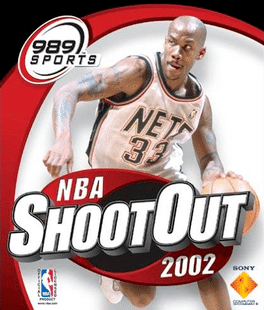New Playstation Games - Page 17
-
Zoboomafoo: Leapin' Lemurs
2001
Zoboomafoo will have to collect at least twenty-five of the fifty snacks in each level before he can move on to the next, but with the help of his friends and his own jumping, leaping, and climbing abilities, he's ready for the challenge. Aside from the interactive action this game offers, it also focuses on helping players learn about the animals they encounter. When you meet a new animal, the game will give you "Animal Fun Facts" that tell you something about the way that animal lives. So get ready to take on the role of Zoboomafoo, where you'll scamper, scurry, and more importantly, learn! -
SpongeBob SquarePants: SuperSponge
2001
star 4.9Hoppin' Clams! SpongeBob wants to give his friend Patrick Star an autograph from their favorite superheroes Mermaid Man and Barnacle Boy, for his birthday. Help SpongeBob fulfill the quest to win their autographs! -
LMA Manager 2002
2001
LMA Manager 2002
2001
LMA 2002 was the final version in the series to be released on PlayStation, launched in October 2001. Although chiefly just an update from the 2001 version, the game did prove to be quite a stepping stone from the LMA of old and the LMA seen today. The first PlayStation 2 incarnation went under the same name when released in April 2002. A significant update from PS1, it allowed players to manage in one of six European leagues, all of which were processed by the game simultaneously (the top two divisions in Italy, Spain, Germany and France were added, in addition to the existing top four divisions in England and Scotland). On the PS2, matches played out in full in a 3D match environment, followed by post-match highlights voiced by famous BBC presenter Gary Lineker alongside the returning Hansen. The game play advanced in this game from the 2001 version, in particular the in-match style. Players tend to shoot early, from around thirty yards, rather than enter into the penalty area. -
Final Fantasy I+II Premium Package
2001
This Japanese special edition includes two enhanced PlayStation ports of the first two Final Fantasy games with commemorative figures. -
FIFA Soccer 2002: Major League Soccer
2001
PlayStation port of FIFA Soccer 2002: Major League Soccer. -
Simple 1500 Series Vol. 77: The Suiei
2001
Simple 1500 Series Vol.77: The Suiei is a swimming simulation game that features the classic 4 swimming styles (Freestyle swimming, Breaststroke, Backstroke. & Butterfly stroke), up to four players to compete at the same time, the gameplay controls is using the gamepad analog sticks. -
Simple Characters 2000 Series Vol. 01: Kidou Senshi Gundam - The Gunjin Shougi
2001
Kidou Senshi Gundam - The Gunjin Shougi combines characters from the different Gundam series and the shogi (chess) game. -
Simple 1500 Series Vol. 75: The Double Shooting - Raystorm & Raycrisis
2001
Simple 1500 Series vol. 75: The Double Shooting - Raystorm & Raycrisis is a compilation of 2 Taito arcade game shooters. 1 - RAYSTORM: The year is 2219 and the Secilia Federation has initiated a plan to destroy Earth. So far, the evil federation has been highly successful in destroying much of the planet's defensive forces and resources. With world destruction at hand, the fate of mankind is looking for a savior. 2 - RAYCRISIS: The sequel to RayStorm, RayCrisis: Series Termination takes place in a time when the future of mankind hangs in the balance. Determined to create the ultimate neural interface between man and machine, a rogue scientist named Leslie McGuire cloned herself and hardwired the clone's mind into directly into Con-Human, a powerful, worldwide computer network. Con-Human's AI quickly took over the clone's consciousness and was driven insane. Unable to comprehend the complexities of sentience and the human psyche, the Network went on a killing spree that wiped out most of Earth's 13 billion citizen -
Simple 1500 Series Hello Kitty Vol. 03: Hello Kitty Block Kuzushi
2001
Simple 1500 Series Hello Kitty vol.3 Hello Kitty Block Kuzushi is a classic breakout game, in the style of the classic arcade game Arkanoid, in which the player controls hello kitty and has to destroy all the bricks in each level to advance to the next one. There are special bricks like in Arkanoid that allow the player to use speciall attack in the ball, like the slow effect, the fast attack, etc. The game got different levels depending of the player choices (in one you go through levels of letter C and in other in levels of letter B for example), each letter is divided into 5 different brick levels. After passing a level the player unlock a picture that he can later colour in the album mode. -
Simple 1500 Series Hello Kitty Vol. 04: Trump
2001
Simple 1500 Series Hello Kitty Vol. 04: Trump is a Hello Kitty themed card game for the PlayStation. Trump or trumps or trump suit are terms used in trick-taking games, traditionally called whist-style games although the best-known example may now be bridge, where cards of one suit rank above all non-trump cards, and automatically prevail over them, losing only to a higher trump if one is played to the same trick. -
Simple Characters 2000 Series Vol. 02: Afro Ken - The Puzzle
2001
Stay above water and match up the wigs in this Afro Ken-themed puzzle game released by D3. -
Pipe Dreams 3D
2001
-
Spider-Man 2: Enter Electro
2001
star 5.6Spider-Man 2: Enter Electro is an action-adventure video game developed by Vicarious Visions and published by Activision for the PlayStation in 2001. It is the sequel to Neversoft's Spider-Man title, which was released the previous year. The game follows Spider-Man as he attempts to stop another old nemesis Electro from obtaining a source of power known as the Bio-Nexus Device. Game bosses include Shocker, Hammerhead, Lizard, Sandman and the exclusive charged-up Hyper-Electro. -
Kids Station: Hello Kitty no Oshaberi ABC
2001
An educational game starring Hello Kitty teaching the player the alphabet through mini-games. -
Super Tokusatsu Taisen 2001
2001
A crossover strategy game featuring characters from many tokusatsu properties -
Tomb Raider Anthology
2001
Tomb Raider Anthology is a Russian CD and DVD-ROM Compilation that regroups 8 Tomb Raider games. -
Kids Station: Barbapapa
2001
Educational game for kids based on Barbapapa cartoon character. It features a bunch of mini-games. -
Scooby-Doo and the Cyber Chase
2001
star 6.5Play as Shaggy or Scooby and try to defeat the Phantom Virus in Scooby-Doo and the Cyber Chase for PlayStation. Released to correlate with the same-titled movie, this seven-stage, multilevel adventure puts the Mystery Inc. gang in the middle of cyberspace warding off bad guys and evildoers in their attempt to locate the Phantom Virus. From a control room players can access the areas of Japan, Ancient Rome, Arctic Circle, Prehistoric Jungle, The Big City, Egypt, and an Amusement Park. Each area consists of three levels including the boss level, but initially only the Japan area can be accessed with other areas becoming available as play progresses. Each area alternates between Shaggy and Scooby as the character being controlled. -
NBA ShootOut 2002
2001
NBA ShootOut 2002
2001
If you love basketball (and you know you do), get ready for best thing since sliced bread. NBA SHOOTOUT 2002 takes the popular SHOOTOUT franchise to new heights, featuring the most realistic-looking action to date. The player models are created from a combination of photographs, motion-capture animation, and texture mapping which means the superstars and benchwarmers alike will appear just as they do in real-life. An updated game engine gives the play the feel of the NBA, and all of the new rules changes are in effect, too. The courts look like their real-life counterparts, with updates included for new floors like Seattle's. You choose your team, execute any desired trades, set your starting lineup, and pick through the playbook to create the most dominant squad in the league. High-flying dunks, touch shooting, and a sophisticated foul system make the NBA SHOOTOUT 2002 even more incredible than the beloved series installments that paved the way. -
M&M's Shell Shocked
2001
M&M's Shell Shocked
2001
star 7M&M's Shell Shocked is an Action game, developed by Boston Animation and published by Simon & Schuster, which was released in 2001.
